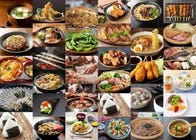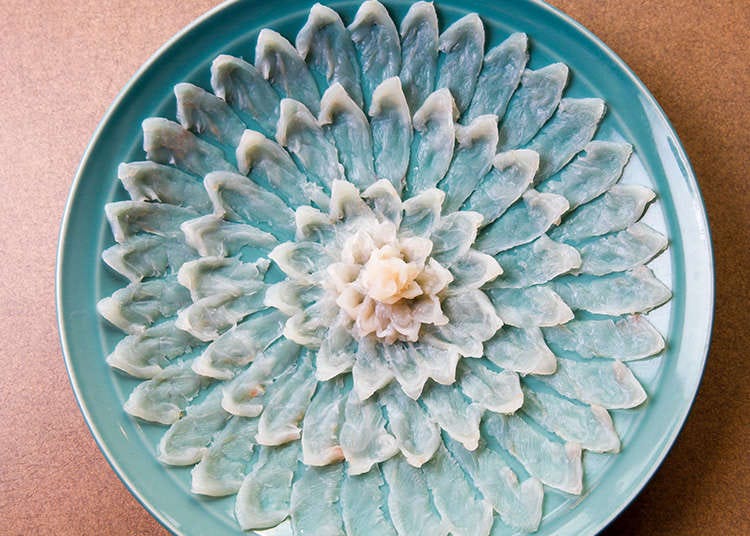
Dining on the Edge: The Allure of Japan's Poisonous Fugu Pufferfish
- Written by: Dave Conklin
One of the most unusual things to eat in the world, and also potentially one of the most dangerous, is fugu, the Japanese pufferfish or blowfish. Not all, but the most famous and desired sub-species of fugu contain toxins that can kill diners if not properly prepared.
So why would any sane person want to risk their life for a bite of fish? When there are plenty of much safer alternatives available? And who even discovered how to safely prepare it in the first place?
How did people first find out how to eat fugu pufferfish?
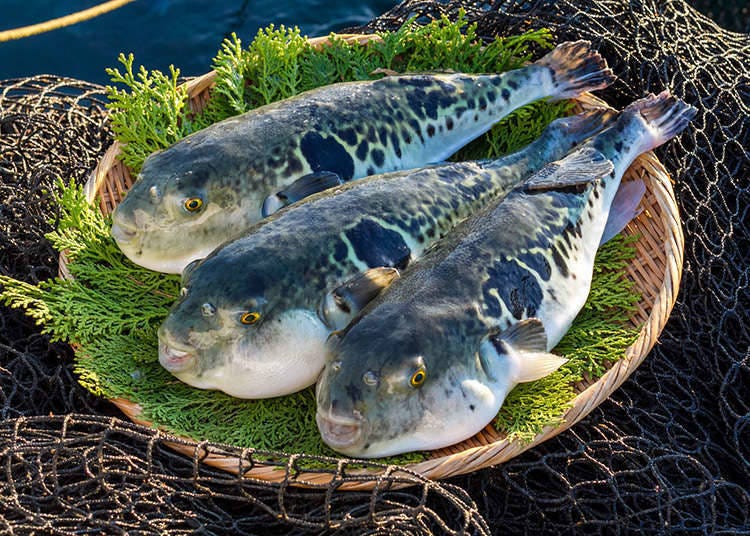
We will never know who first ate fugu, nor when that was. Discarded fugu bones have been found in Japan dating from the late Jōmon period, from around 500 BCE, and there is written evidence from modern Nara Prefecture dating from the 4th or 5th century.
The earliest known death from eating fugu comes from 2,300 years ago from China. By the late Edo period, dining on fugu had become fairly common.
So we DO know people have been risking their lives by eating this fish for a long, long time. But why?
Why eat fugu?

The most popular fugu for eating, torafugu (Takifugu rubripes), the king of Fugu, and mafugu (ordinary fugu, Takifugu porphyreus), the queen of fugu, can contain a poison, tetrodotoxin to be more precise.
The toxin can be present in the livers of the fish, as well as the testes, ovaries, and even the skin, depending on which variety of fugu it is. The toxin is formed in the bodies of wild fugu as a byproduct of eating a certain kind of bacteria that lives on corals.
When ingested by humans, the toxin acts to block the absorption of sodium, which then prevents muscles from contracting, or in other words, paralysis. In the not-too-distant past, it was not uncommon for thrill-seeking men—and it was almost always men—to enjoy a meal of fugu, especially including a bit of the liver followed by a few hours of partial paralysis. The practice might be likened to parachuting out of planes. In most cases, the chute will open, and the skydiver will land safely. But the risk of catastrophic failure is always there, just as with eating fugu.
Japan started requiring fugu chefs to pass a test and be licensed to prepare fugu and banned the serving of parts with toxin in 1958, a year in which 168 people in Japan died from fugu poisoning. Still, some people continued to seek out the toxins, including the Living National Treasure kabuki actor Bandō Mitsugorō VIII who, in 1975, died after eating four servings of liver after convincing a Kyoto restaurant he was immune to the poison.

The toxin, which is 1,000 times deadlier than cyanide, comes from fish ingesting a type of bacteria that lives on corals in the sea. The toxin acts to block the absorption of sodium, which then prevents muscles from contracting, or in other words, paralysis.
These days around 90% of the fugu eaten is farm-raised, usually in ponds filled with onsen (hot spring) water. This means no chance for poisoning, which is why the Tokyo Municipal Government considered doing away with testing and licensing fugu chefs.
People still are poisoned but almost only when eating fugu at home, most often after catching the fish while fishing. One recent problem is that tora fugu, the most poisonous, are now swimming in the water around Hokkaido, which used to be too cold for them. People not expecting to catch a tora fugu often do not properly prepare the fish and so are poisoned, occasionally fatally.
Fugu can be enjoyed throughout the year, but it becomes fatter and tastier in winter due to the low temperature of the sea. Also, the shirako (soft roe) gets bigger before the fugu lays eggs, so this is the best time to eat shirako.
Fugu restaurant dining in Japan
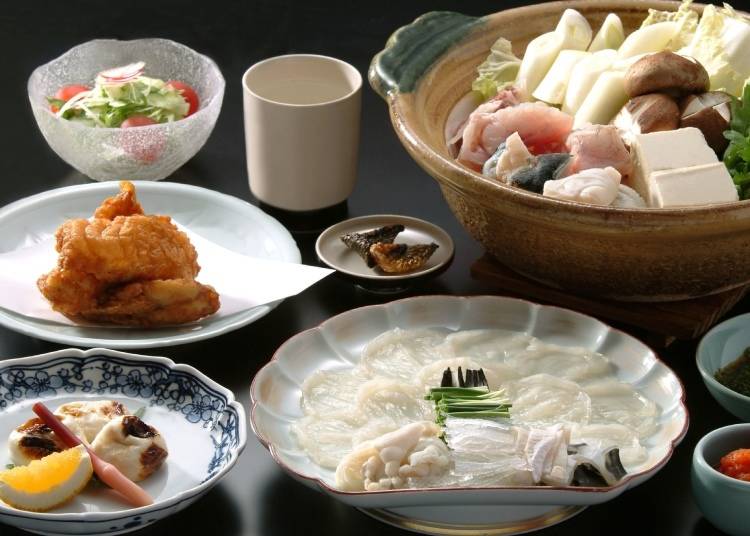
The best way to enjoy fugu at a restaurant is by a full-course meal with a small group (2-4) of people. A complete course meal will have from five to ten courses, which usually begin with shirako and end with a nabe hotpot if the restaurant is serving natural, wild-caught fugu. Your group may actually eat the entire fish, one large fugu being big enough to feed three or even four people.
Let’s now take a look at what a fugu course looks like.
The first thing served will likely be fugu shirako, the milt-filled reproductive gland of male fugu.
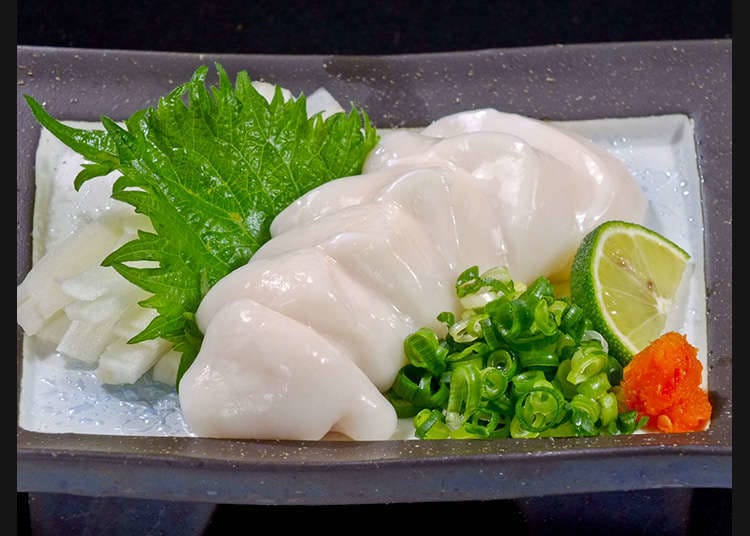
Shirako is soft and creamy and is usually served with ponzu and some sort of finely cut red or green-colored plant material which is added more for color than flavor. Shirako is frequently served warm, after being lightly grilled over charcoal.
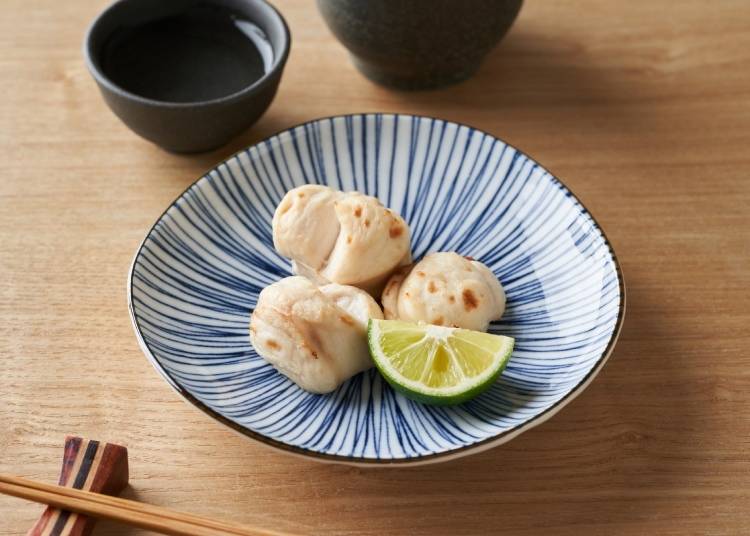
Next will come fugu sashimi. Fugu sashimi, sometimes called tessa, should be sliced extremely thin, thin enough so that it is translucent.
Good fugu restaurants will usually offer a selection of brightly colored ceramic platters for customers to choose from, the colors and design of the plate being visible underneath the sashimi.
Slices of fugu sashimi are usually dipped in either shōyu or ponzu, depending on the restaurant.

Even the skin (kawa) of fugu is eaten, despite it potentially being poisonous to touch. There are several common ways the skin is served, including thin strips of parboiled skin or as nikogori, small blocks of jellied fugu broth (the skin is full of collagen, which, besides being good for the skin, also is excellent for making into jelly).
Next may come fugu karaage, or deep-fried fugu. Fugu, like many other fish, are very bony. The raw meat is difficult to remove from some parts, so deep frying is a good—and tasty—way to prepare these parts. Fugu karaage is made by marinating pieces of fish, coating the pieces in some sort of flour mix, and then deep frying the pieces to a light brown or golden color.
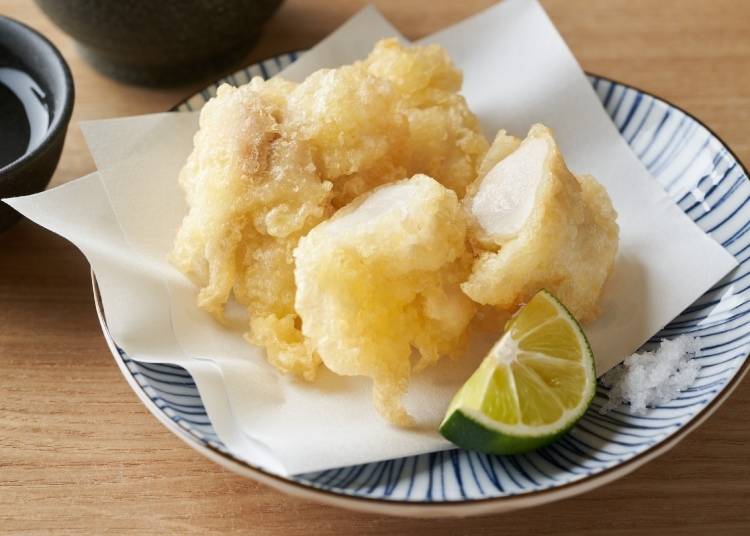
While some restaurants may offer fugu that has been grilled over charcoal, giving it a slightly smoky flavor, more often than not the main portion of a course meal will conclude with chiri-nabe, or fugu hot pot.
Like with most nabe dishes, this one usually features hakusai (Chinese cabbage), various mushrooms, tōfu, negi onions, and an assortment of greens such as shungiku (garland chrysanthemum), mizuna and/or mitsuba, and of course, chunks of fugu. Chirinabe is usually flavored with ponzu as well as chili paste.
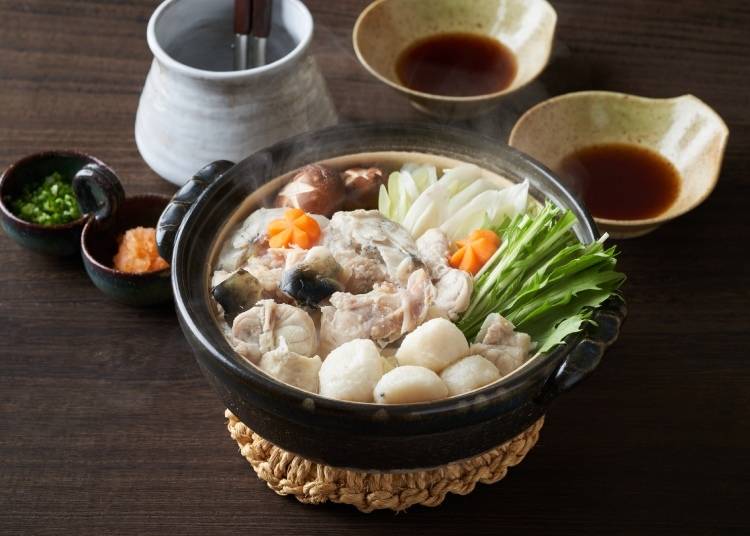
At some point during your meal, you will likely be asked if you want some hirezaki, a drink made using a part of the fish you probably are not expecting: the fins!
Hirezake (pronounced he-ray za key) is sake flavored with dried fugu fins that are soaked in sake for a few minutes, then singed and dropped into a cup of warm sake, often with the fin still smoldering.
When done properly, the sake will take on a slightly smoky flavor; if not done right, it can have more of a burnt taste. It is definitely worth giving it a try if you have a chance.
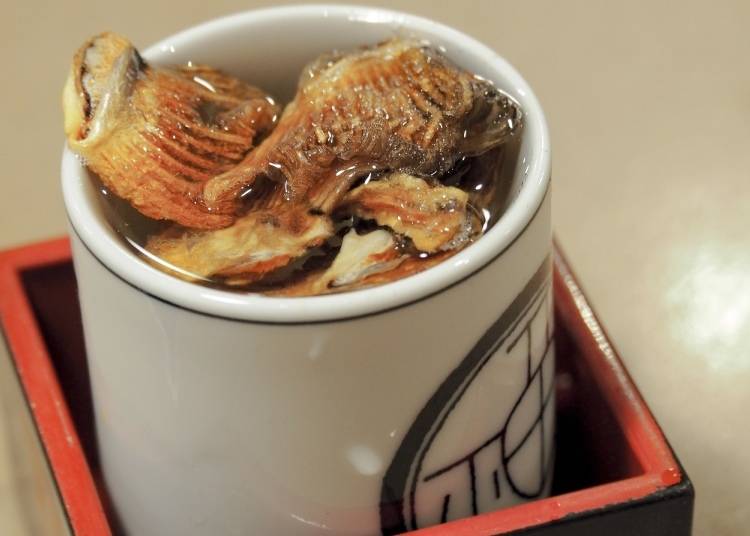
Now that you’re familiar with what just might be the craziest food to eat there is in the world (are there any others that are as potentially deadly as fugu?), what do you say about giving it a try the next time you are in Japan.
Although it is a specialty of the Shimonoseki area (Yamaguchi, Oita, and Fukuoka prefectures), these days, it can be found in restaurants throughout Japan where you can be pretty much guaranteed it will be safe to eat.
Originally from Portland, Oregon, Dave Conklin has lived in Ningyōchō where he researches and writes about food and food culture. He has an MA in Japanese History, his thesis being on the history of Japanese food in pre-WWII America. A published author, his book, 'Mr. Conklin Eats His Way Around Tokyo' is available at bookstores in Japan. You can find some of his other work at www.foodadventuresjapan.com.
*Prices and options mentioned are subject to change.
*Unless stated otherwise, all prices include tax.
Popular Tours & Activitiess
Recommended places for you
-

Kanzenkoshitsuyakinikutabehodai Gyugyu Paradise Sannomiya
Yakiniku
Kobe, Sannomiya, Kitano
-

JIHEY
Puffer Fish (Fugu)
Namba, Dotonbori, Shinsaibashi
-
Goods

Yoshida Gennojo-Roho Kyoto Buddhist Altars
Gift Shops
Nijo Castle, Kyoto Imperial Palace
-

ISHIDAYA Hanare
Yakiniku
Kobe, Sannomiya, Kitano
-
Appealing

Rukku and Uohei
Izakaya
Sapporo / Chitose
-

Koshitsu Fugukaniryori Isobue
Puffer Fish (Fugu)
Namba, Dotonbori, Shinsaibashi
-

This Winter, Godzilla Takes Over Haneda Airport
by: Guest Contributor
-

Jujutsu Kaisen Takes Over JR East With a Wrapped Shinkansen This Winter
by: Guest Contributor
-

Strawberries, Style, and Tokyo’s Coolest Neighborhood: Winter Afternoon Tea in Kichijoji
by: Guest Contributor
-
Ad

Complete Guide to Ueno’s National Museum of Nature and Science, the Perfect Place to Visit on Rainy Days or With Children
-

How to Get Don Quijote's Exclusive 2025-2026 Winter Gift (+Tax-Free Savings)
-

Japan’s Shinkansen Is About to Change Travel in an Unexpected Way
by: Guest Contributor
-

16 Secrets About Mt. Fuji, the Symbol of Japan: Even Japanese People Don’t Know That?!
-

Healthcare in Japan for Tourists: What to Do When You Get Sick or Injured in Japan
-

Ultimate Tokyo Transit Guide: JR, Subways, and Private Railways Explained, Plus Suica/PASMO and Money-Saving Passes
-

20 Best Things to Do in Fukushima Prefecture (Sightseeing Attractions, Local Foods & Activities)
-

Japan’s Infamous Fugu: Would YOU Eat Osaka’s ‘Lethal’ Puffer Fish?
-

Takahan Ryokan: Enjoy Spectacular Hot Spring Views at Yuzawa's Premier Traditional Inn!
- #best sushi japan
- #what to do in odaiba
- #what to bring to japan
- #new years in tokyo
- #best ramen japan
- #what to buy in ameyoko
- #japanese nail trends
- #things to do japan
- #onsen tattoo friendly tokyo
- #daiso
- #best coffee japan
- #best japanese soft drinks
- #best yakiniku japan
- #japanese fashion culture
- #japanese convenience store snacks















